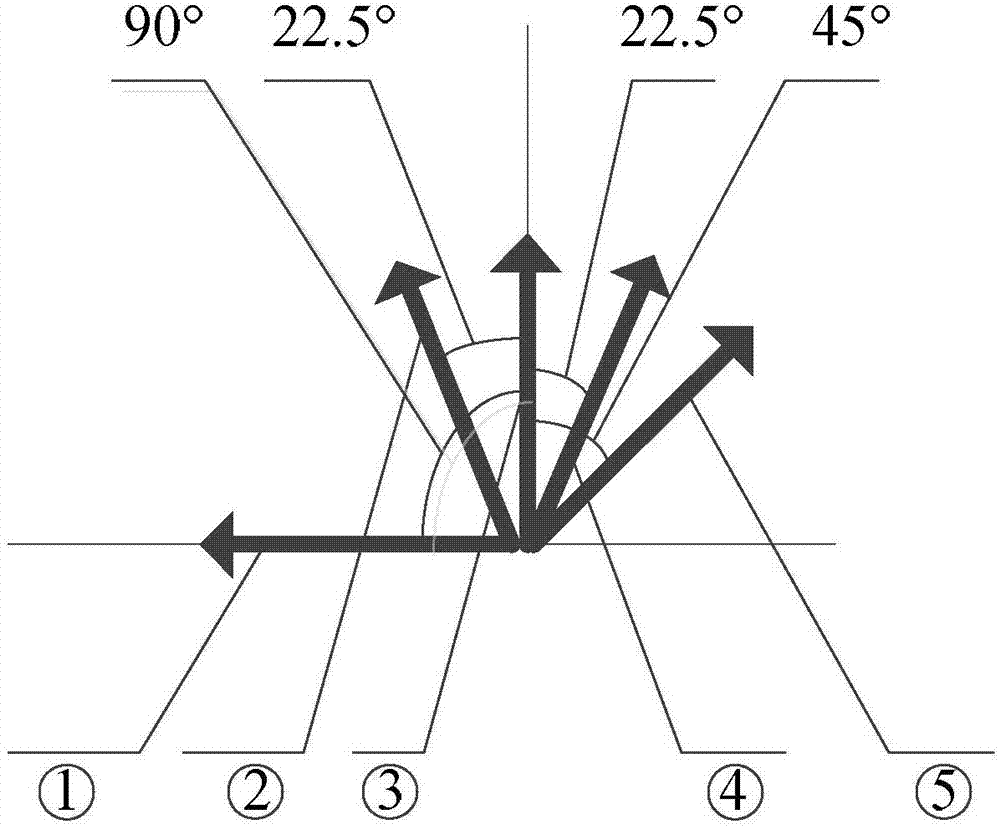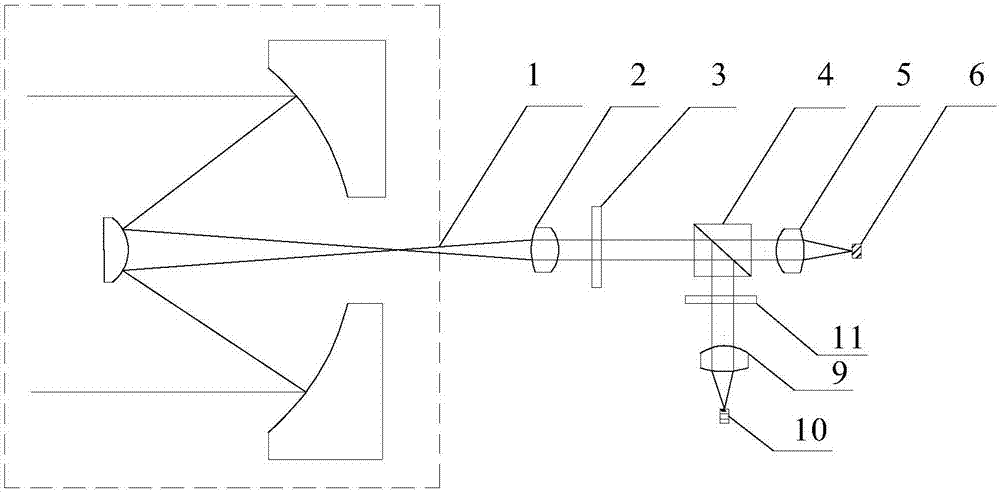Optical antenna integrating polarization, isolation, receiving and transmitting
An optical antenna and polarized light technology, applied in optics, optical components, electromagnetic transceivers, etc., can solve the asymmetry of uplink and downlink, difficulty in meeting the requirements of small satellite loads, and compatibility limitations of optical communication terminals, etc. problem, to achieve superior isolation, convenient networking, and high reliability
- Summary
- Abstract
- Description
- Claims
- Application Information
AI Technical Summary
Problems solved by technology
Method used
Image
Examples
Embodiment 1
[0027] Embodiment 1 of this polarization-isolated transceiver integrated optical antenna is as follows: figure 1 As shown, it includes a laser emitting module 10, a second collimating mirror 9, a wave plate group consisting of a λ / 4 wave plate 8 and a second λ / 2 wave plate 7, a polarizing beam splitter 4, and the first λ / 2 wave plate 2 wave plate 3, collimator mirror 2, condenser mirror 5, a light receiving module 6 and an optical antenna 1.
[0028] The wavelength λ=1550nm of the laser beam emitted by the laser emitting module 10 of this example, the laser beam passes through the second collimating mirror 9 and the wave plate group composed of a λ / 4 wave plate 8 and the second λ / 2 wave plate 7, and the laser beam The linearly polarized light that becomes S-polarized, and then the reflected S-polarized light through a polarization beam splitter 4 is output to the first λ / 2 wave plate 3 without loss, and the fast axis direction and S polarization of the first λ / 2 wave plate 3 ...
Embodiment 2
[0033] Embodiment 2 of this polarization-isolated transceiver integrated optical antenna is as follows: image 3As shown, its structure is similar to that of Embodiment 1, except that the wave plate group consisting of a λ / 4 wave plate 8 and a second λ / 2 wave plate 7 in Embodiment 1 is replaced by a modulating S-polarized linearly polarized light. Polarizer 11.
PUM
 Login to View More
Login to View More Abstract
Description
Claims
Application Information
 Login to View More
Login to View More - R&D
- Intellectual Property
- Life Sciences
- Materials
- Tech Scout
- Unparalleled Data Quality
- Higher Quality Content
- 60% Fewer Hallucinations
Browse by: Latest US Patents, China's latest patents, Technical Efficacy Thesaurus, Application Domain, Technology Topic, Popular Technical Reports.
© 2025 PatSnap. All rights reserved.Legal|Privacy policy|Modern Slavery Act Transparency Statement|Sitemap|About US| Contact US: help@patsnap.com



